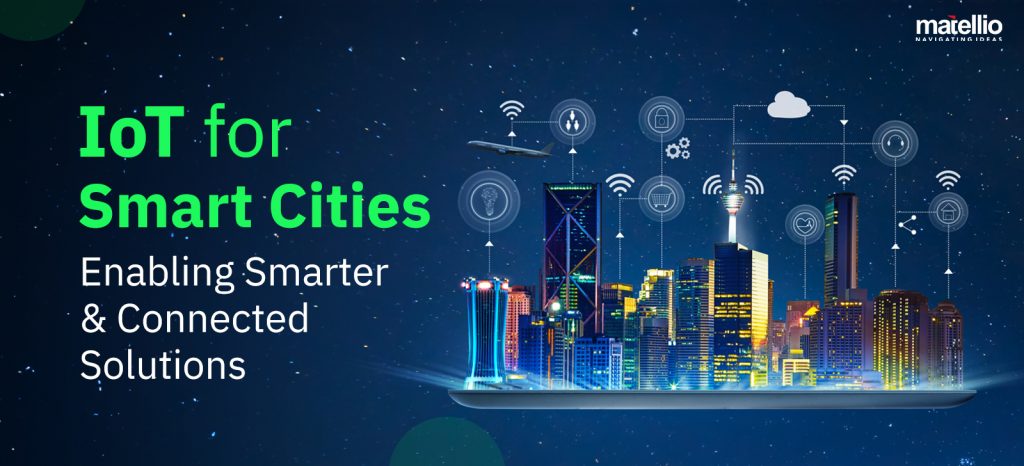The Internet of Things (IoT) is no longer a futuristic concept—it is already embedded in our daily lives, from smartwatches and connected appliances to industrial sensors and autonomous vehicles. In the context of urban development, IoT plays a transformative role in building smart cities—urban areas that use connected devices, data, and intelligent systems to enhance living standards, improve efficiency, and promote sustainability.
As populations grow and cities face challenges like congestion, pollution, and limited resources, IoT emerges as a powerful solution to make urban living smarter, safer, and more sustainable.
What is IoT in Smart Cities?
The Internet of Things refers to a network of interconnected devices that communicate and share data without human intervention. In smart cities, these devices include traffic sensors, energy meters, surveillance cameras, waste management systems, and connected vehicles.
By collecting and analyzing real-time data, IoT helps city administrators make better decisions, optimize services, and improve residents’ quality of life.
Key Areas Where IoT Transforms Smart Cities
1. Smart Transportation
Traffic congestion is one of the biggest urban challenges. IoT-enabled traffic lights, road sensors, and connected vehicles improve traffic flow and reduce accidents.
- Example: Smart traffic systems reroute vehicles based on real-time congestion data.
- Impact: Reduced travel time, fewer emissions, and safer roads.
2. Smart Energy Management
IoT helps optimize energy consumption through smart grids, connected meters, and renewable energy integration.
- Example: Smart streetlights automatically dim when no movement is detected.
- Impact: Reduced energy waste and lower city operating costs.
3. Waste Management
IoT-enabled bins with sensors notify collection services when they are full, reducing unnecessary pickups.
- Impact: Lower fuel usage, cleaner streets, and efficient waste management systems.
4. Public Safety and Surveillance
Connected surveillance cameras, drones, and emergency response systems enhance urban safety.
- Example: AI-powered facial recognition systems identify threats in crowded places.
- Impact: Faster emergency response times and improved crime prevention.
5. Water and Environmental Monitoring
IoT sensors monitor air and water quality, detect leaks in pipelines, and track pollution levels.
- Impact: Improved health outcomes and better environmental sustainability.
6. Smart Buildings and Homes
Connected HVAC systems, lighting, and security systems reduce energy consumption and improve living comfort.
- Example: Office buildings adjust lighting and temperature automatically based on occupancy.
Benefits of IoT in Smart Cities
- Efficiency – Better use of resources like water, energy, and waste management.
- Sustainability – IoT supports green initiatives by reducing pollution and optimizing energy use.
- Safety – Real-time monitoring improves emergency response and reduces crime.
- Economic Growth – Smart cities attract investment and innovation, boosting local economies.
- Improved Quality of Life – Cleaner environments, smoother traffic, and better public services.
Challenges of Implementing IoT in Smart Cities
1. High Infrastructure Costs
Deploying IoT networks requires significant investment in sensors, connectivity, and data centers.
2. Data Security and Privacy
IoT devices collect massive amounts of personal and public data, raising concerns about cybersecurity and surveillance.
3. Interoperability
Different devices and systems may struggle to work together without universal standards.
4. Digital Divide
Not all citizens may have equal access to smart services, potentially widening inequality.
The Future of IoT in Smart Cities
- 5G Integration – Faster networks will enable millions of IoT devices to operate seamlessly.
- AI + IoT (AIoT) – Artificial intelligence will make IoT systems smarter, enabling predictive urban management.
- Blockchain for Security – Blockchain will secure IoT data transactions and prevent tampering.
- Autonomous Systems – Driverless public transport and fully automated infrastructure will redefine city life.
- Sustainable Urban Development – IoT will power eco-friendly initiatives like smart farming, renewable grids, and green buildings.
Conclusion
The Internet of Things is revolutionizing how cities are designed, managed, and experienced. By enabling real-time data-driven decision-making, IoT is building the foundation for smart cities that are safer, cleaner, and more sustainable.
While challenges like cybersecurity and infrastructure costs remain, the long-term benefits of IoT far outweigh the risks. In the coming years, IoT will become the heartbeat of modern urban life, connecting people, technology, and the environment into
